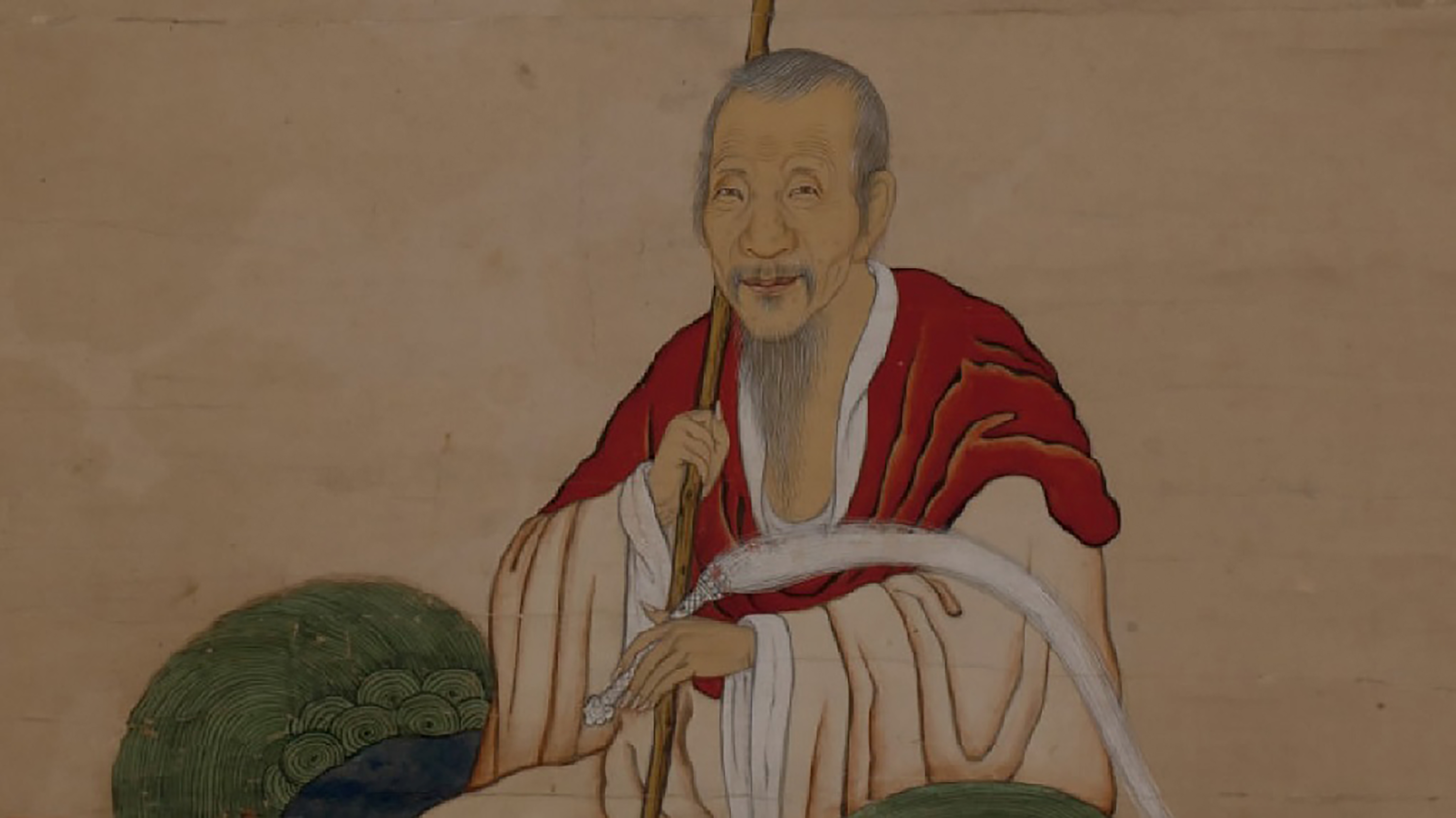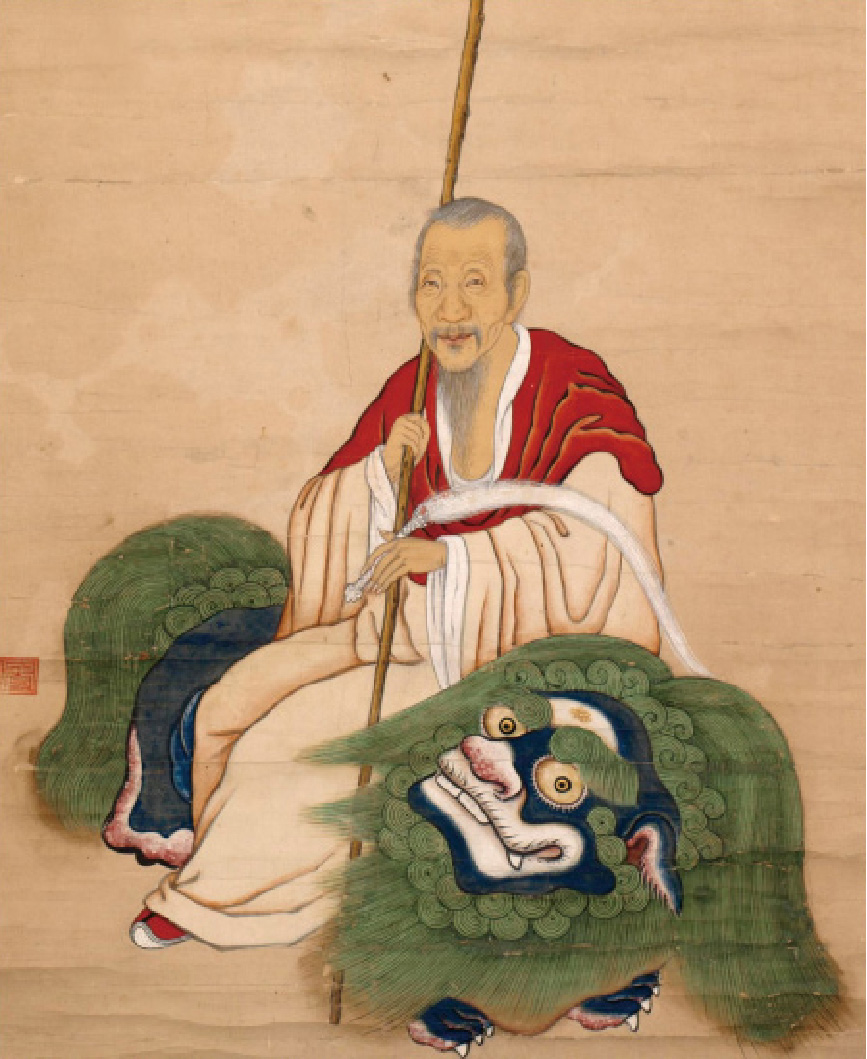
隠元禅師と黄檗文化
Zen Master Ingen and Obaku Culture
人物紹介・年表
隠元禅師 人物紹介

中国福建省生まれ。俗名は
江戸時代初め(1654年)に長崎に渡来し、1661年宇治に黄檗山萬福寺を創建。「
Ingen and a Chronology of His Life
the Zen Master Ingen Person introduction

Ingen was born Lin Zengbing in present-day Fujian Province, China. He served as chief priest at Huangboshan Wanfusi Temple in Fujian Province in the age of the Ming dynasty being replaced by the Qing dynasty. He was a saintly leader of Zen Buddhism at that time, with both vast academic knowledge and great artistic creativity.
In 1654, during the early Edo period, he arrived in Nagasaki. In 1661, he established Obakuzan Manpukuji Temple (named the same as the abovementioned temple in Fujian Province but transliterated in Japanese) in Uji, Kyoto, thus founding the Obaku school of Zen Buddhism. He also introduced many things and cultural elements from China to Japan, including the common bean, which is called the “Ingen bean” in Japan, and the habit of having sencha (extract from tea leaves infused in hot water).
隠元禅師 年表
| 西 暦 | 隠元禅師の生涯及び関係する出来事 |
|---|---|
| 1592年 | |
| 1592~3年 | 文禄・慶長の役を遠因として |
| 1603年 | 江戸幕府成立 |
| 1620年 | 隠元(28歳)、出家 長崎最初の 唐寺の |
| 1634年 | 興福寺2代住持(1635年就任)の |
| 1637年 | 隠元、 |
| 1639年 | 鎖国体制完成 |
| 1642年 | 『 |
| 1648年 | 隠元、 隠元の弟子・ |
| 1649年 | 隠元、再び萬福寺(福建省)の住持となる。 |
| 1652~3年 | 興福寺3代住職・ |
| 1654年 | 隠元(63歳)、四度目の招請でついに隠元中国を 興福寺や崇福寺で多くの言葉をのこす。今は『 |
| 1655年 | 隠元、 |
| 1658年 | 隠元(67歳)、4代将軍・ |
| 1661年 | 隠元(70歳)、黄檗山萬福寺( |
| 1673年 | 隠元、 隠元、82年の生涯を終える。 |
Chronology of the Life of the Zen Master Ingen
| Year in the Gregorian calendar | Timeline of the life of Ingen and related events |
|---|---|
| 1592 | Ingen was born in present-day Fujian Province, China. |
| 1592~3 | The Japanese invasions of Korea occurred, which indirectly caused the decline of the Ming dynasty. |
| 1603 | The Tokugawa shogunate was founded in Japan. |
| 1620 | Ingen became a Buddhist priest at 28. Tohmeizan Kofukuji Temple, the first Chinese temple in Nagasaki, was established (according to one of the various theories). Together with Fukusaiji Temple (established in 1628) and Sofukuji Temple (established in 1629), this temple was referred to as one of Nagasaki’s three major Chinese temples with the character “福” (“fuku,” which means “happiness”) in their names. |
| 1634 | Mokusu, who would become the second chief priest at Kofukuji Temple in 1635, built Megane-bashi (Spectacles Bridge) crossing the Nakashima River. |
| 1637 | Ingen became the chief priest at Huangboshan Wanfusi Temple in Fujian Province. |
| 1639 | A national isolation system was completed in Japan. |
| 1642 | A book titled “Collected Words of the Zen Master Ingen” was published. It was a big hit and was followed by many sequels throughout the lifetime of Ingen. |
| 1648 | Ingen became the chief priest at Longquansi Temple in Fujian Province. Mushin, a friend of Yaran, who was one of Ingen’s disciples, arrived in Japan. |
| 1649 | Ingen reassumed the position of chief priest at Huangboshan Wanfusi Temple in Fujian Province. |
| 1652~3 | Members of the Chinese community in Nagasaki, including Itsunen, the third cheif priest at Kofukuji Temple, repeatedly visited Ingen to request him to move to Japan. |
| 1654 | At the age of 63, in response to the fourth request of the Chinese community, Ingen finally left China on board a ship that is said to have been prepared by Zheng Chenggong (aka Koxinga) and arrived in Nagasaki. At Kofukuji Temple and Sofukuji Temple, he left many words, which are recorded in a book titled “Collected Words of Fusho Kokushi.” |
| 1655 | Ingen became the chief priest at Jiunzan Fumonji Temple in present-day Takatsuki City, Osaka Prefecture. |
| 1658 | At the age of 67, Ingen met Tokugawa Ietsuna, the fourth Tokugawa shogun. |
| 1661 | At the age of 70, Ingen established Obakuzan Manpukuji Temple in present-day Uji City, Kyoto Prefecture. |
| 1673 | Ingen was awarded the title of “Daiko Fusho Kokushi” (lit. “High Priest Who Sheds Bright Light on the World”) by the retired Emperor Go-Mizunoo. Ingen died at 82. |







